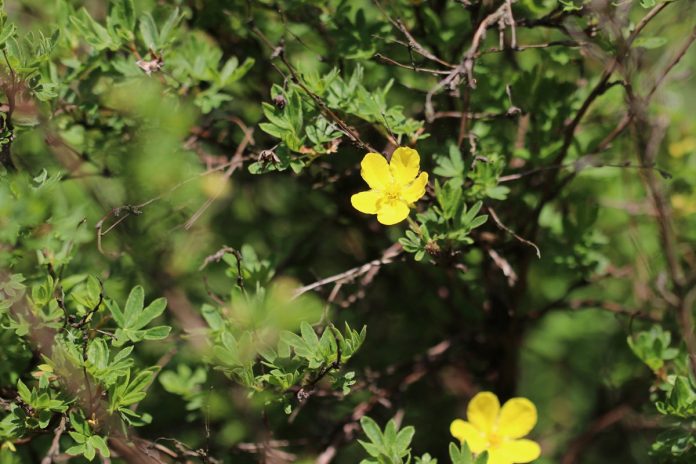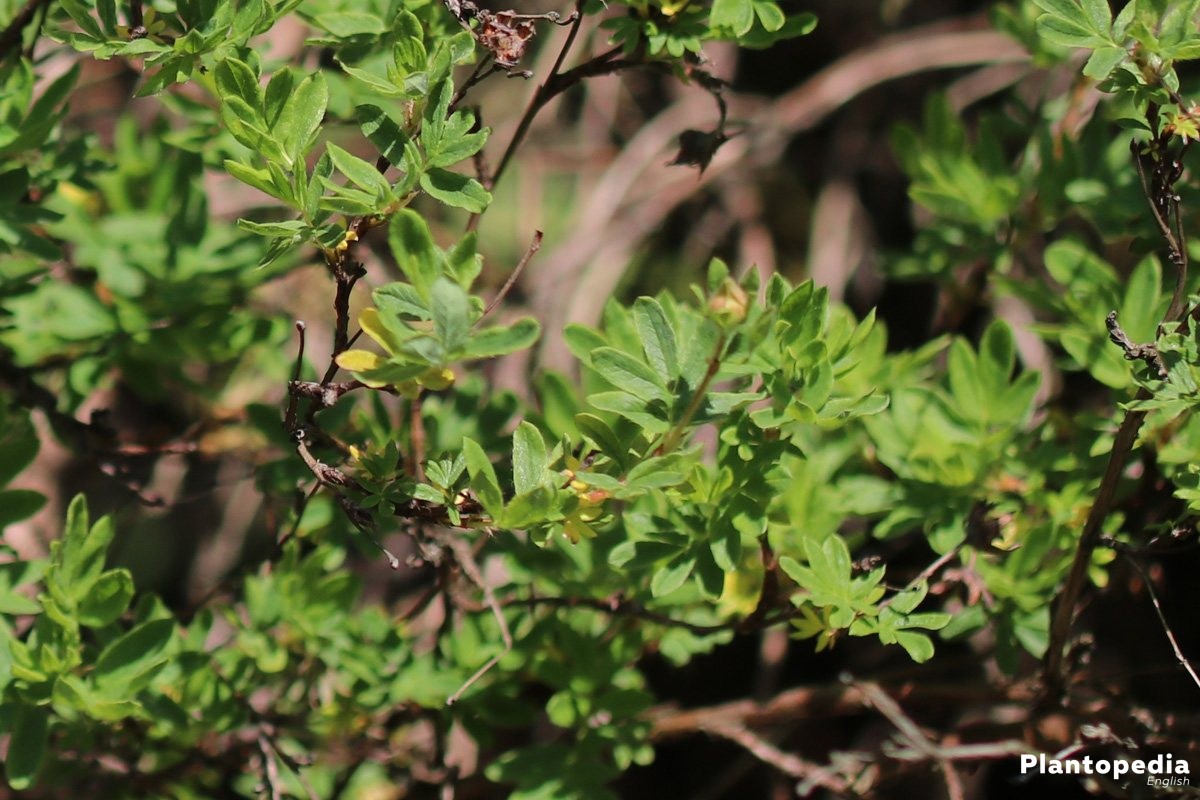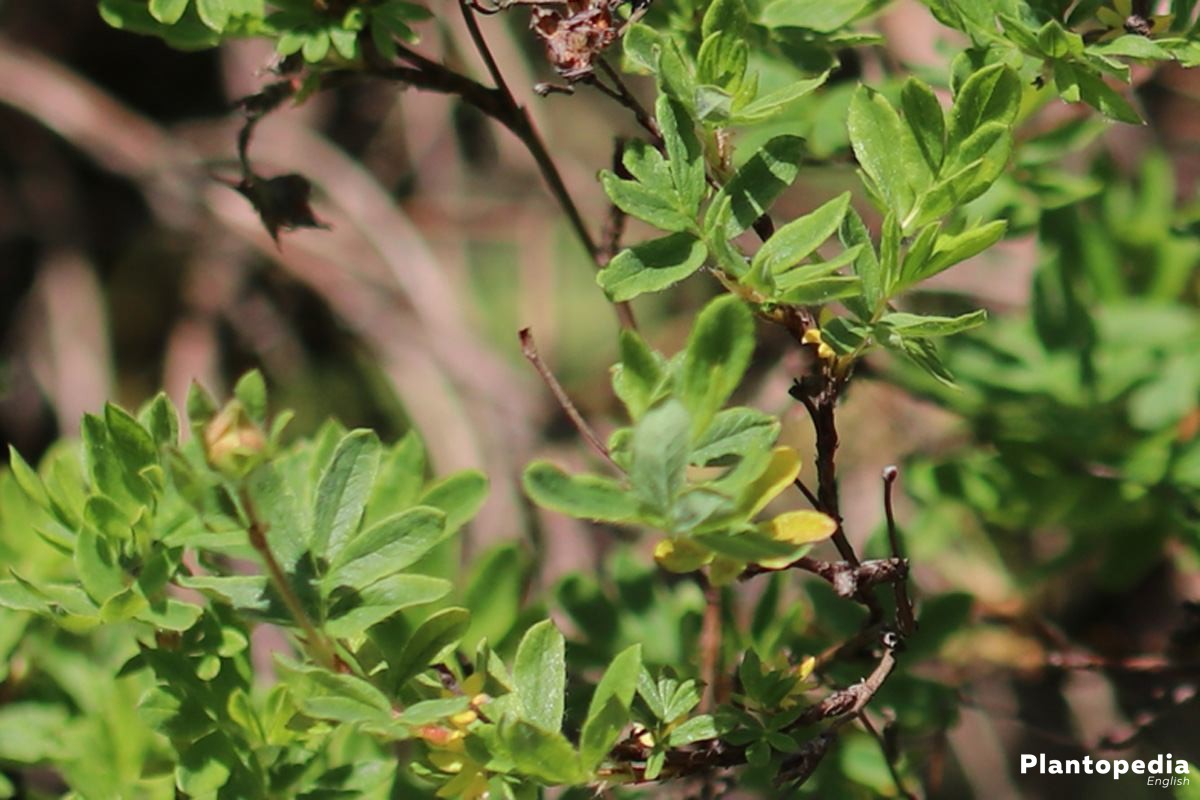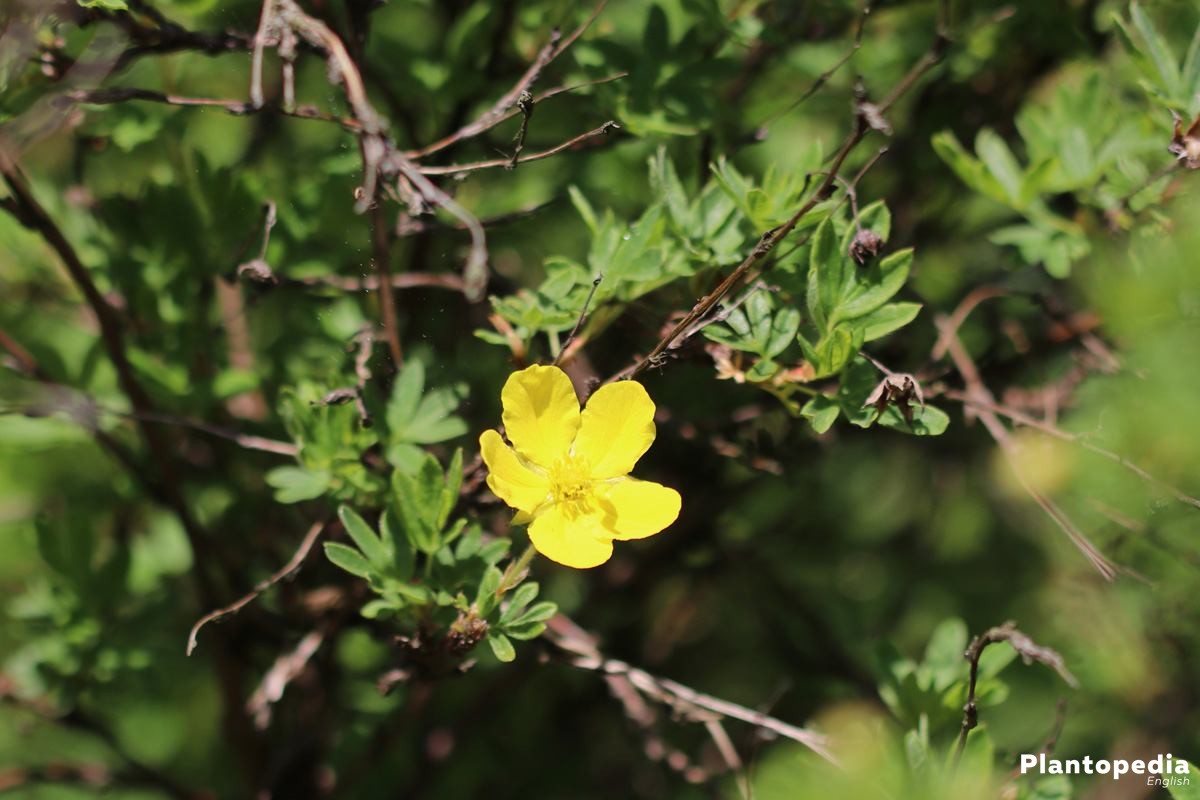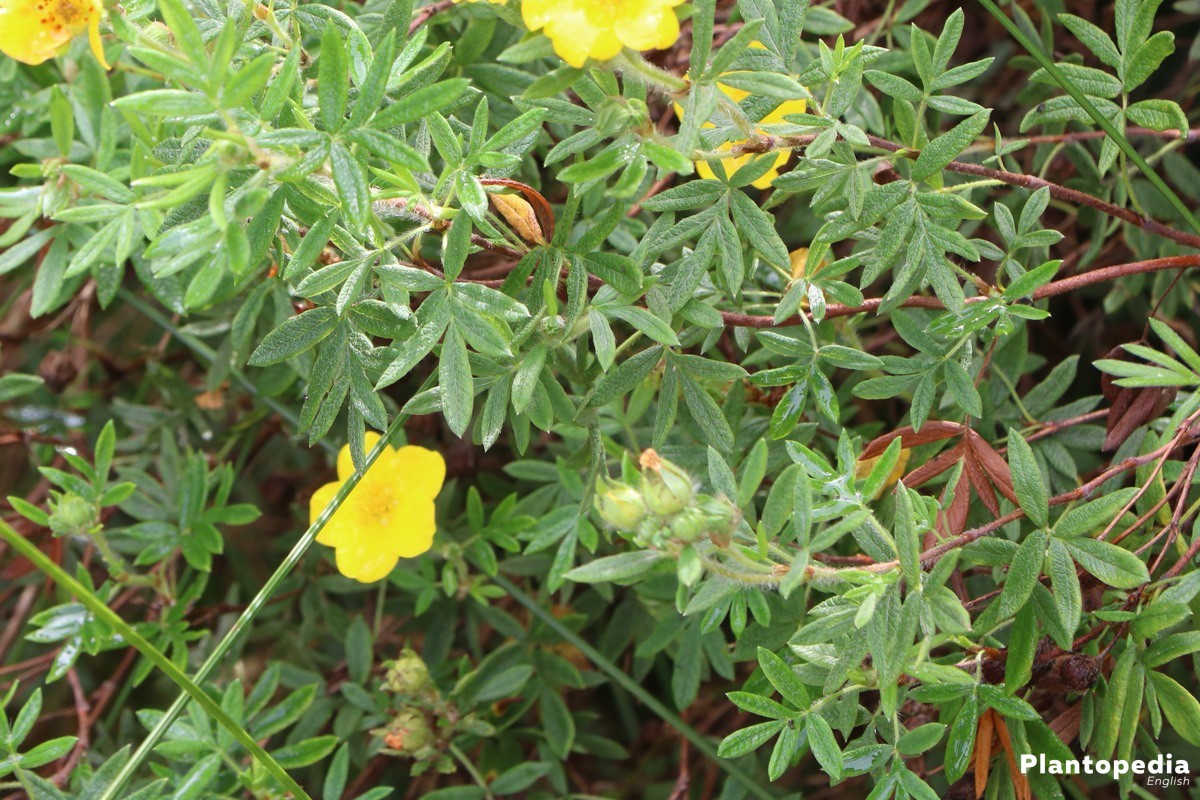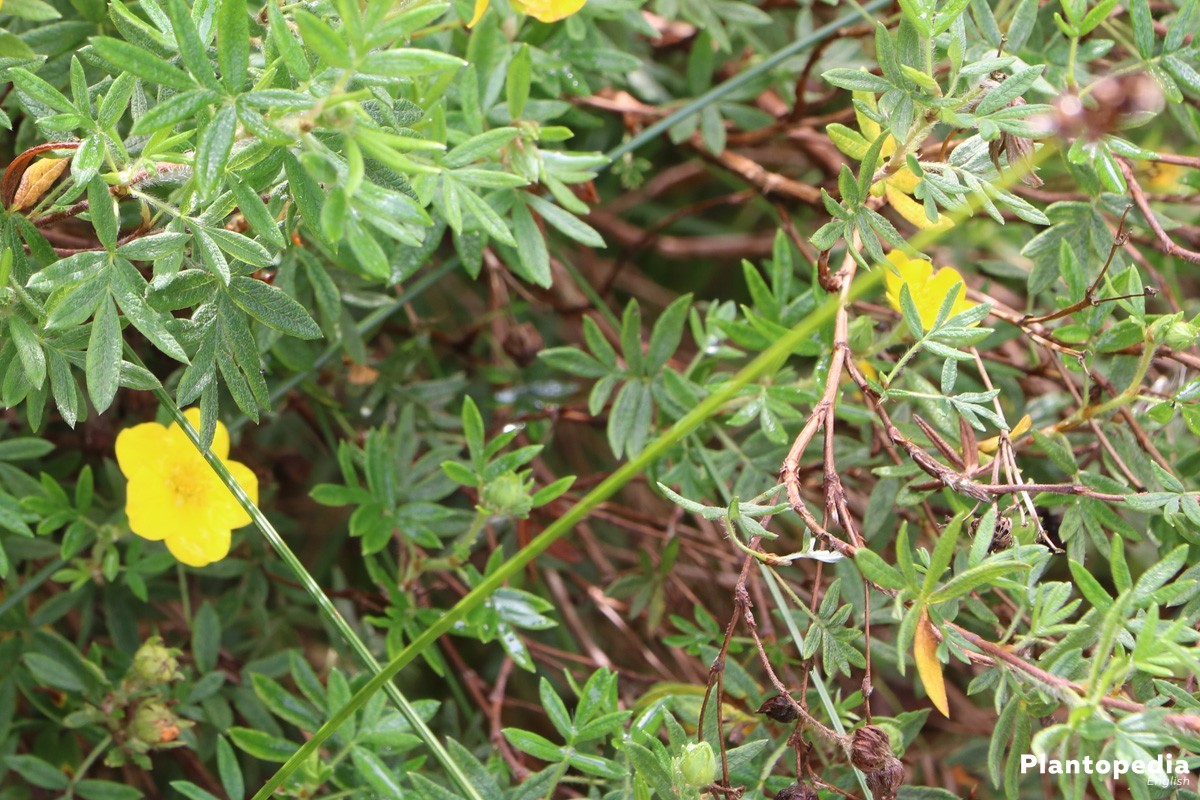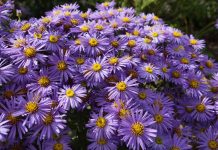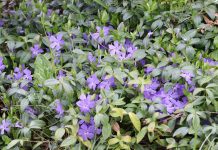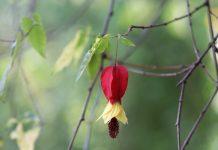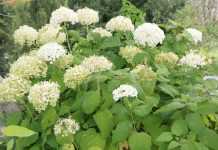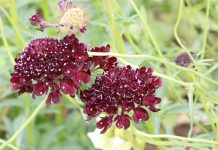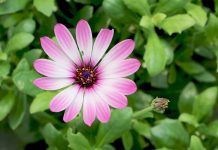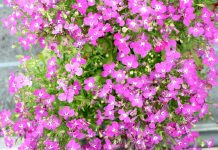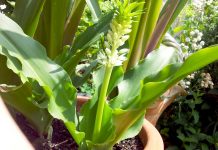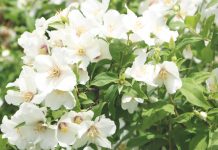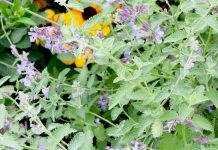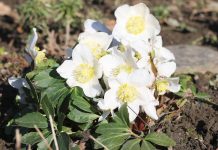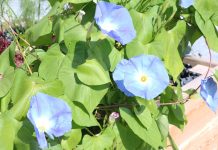Potentilla fruticosa is a spectacular long-flowering plant, which is strewed with yellow, white or salmon-pink flowers from May to October. Typical for this plant are its pinnate, five to seven-petaled flowers, which resemble the fingers of a human hand. This typical rock garden plant offers countless decoration possibilities and planting locations in the domestic garden.
Plant Profile
Contents
- Family: Rosaceae
- Genus: Potentilla
- German names: Fünffingerstrauch (five-finger shrub), Strauch-Fingerkraut
- Origin: Eurasia, North America
- Growth: ground-cover plant, dwarf shrub, overhanging, densely branched
- Height: 30 – 120 cm depending on varieties
- Flowering period: May to October
- Flowers: unfilled, 2 – 3 cm wide, crown-shaped
- Flower colors: bright yellow, white, light red or salmon-pink
- Leaf: fresh green, depending on variety three, five or seven-petaled flowers, slightly hairy
- Fruits: small inconspicuous nuts
Originally from Eurasia and North America, shrubby cinquefoil grows as a summer green, upright, overhanging and compact dwarf shrub. Depending on the variety, it reaches a height of 30-120 cm. It is very robust, even the flowers are heat, sun and rain resistant. The long-flowering period is exceptional and makes shrubby cinquefoil a versatile garden plant. As a colorful hedge plant, its dense foliage protects against prying eyes, as ground-cover plant covers masterfully bald spots and it is, as a solitary plant, a decorative eye-catcher.
Care
Potentilla fruticosa is unpretentious and carefree and thanks to its modesty it is also a good beginner plant for new gardeners. Once grown, the care is mostly limited to watering and pruning.
Location
Shrubby cinquefoils are predominantly light-hungry plants. As a result, they usually thrive best in full sun locations. The more sun, the richer the abundance of flowers. This is especially for varieties with yellow and white flowers. Exceptions are red-flowered varieties, which feel more comfortable in the shade.
Soil
Basically, Potentilla fruticosa can cope with any good and loose soil. Nevertheless, it prefers fresh to moist gravelly or nutrient-poor and loose soils. These can be acid to slightly alkaline, with a pH between 5 and 7. A higher pH value would have adverse effects on flowering and could promote a so-called iron chlorosis (iron deficiency).
Heavy and compacted soils should be made looser and more permeable by adding sand or grit and avoiding very sandy and very humid soils. In the case of appropriate soil conditions, a plant neighborhood appears to the ornamental cherry tree, the European smoketree, weigela and other plants of the rose family, which are related to shrubby cinquefoil.
Planting
At the right time of planting, it is important whether we are talking about bare-root plants and therefore plants without soil blocks or pots. While bare-roots plants can be planted from September to the end of April, there is a year-round planting time for plants in pots, as long as the soil is frost-free. Basically, spring is the best time for planting.
Preparation
- before planting water the root balls for about an hour
- in this way the roots can absorb water, which makes them easier to grow
- in the meantime loose the soil in the planting location thoroughly
- if necessary, mix some mature compost
- then dig a sufficiently large planting hole
- it should be 1.5 times as deep and twice as wide as the root balls
- do not put into the planting hole fertilizer and stable manure
- they would burn the roots so that they could no longer absorb nutrients
- the roots should neither be snapped nor turned
- before the planting is carried out, broken and snapped parts are cut out in the root area
- for bare-root plants cut the roots to 25-30 cm
Planting
When being planted, shrubby cinquefoil is placed in the center and straight into the planting hole and filled with excavated soil all around. Finally, the plant should be so deep in the ground that the root collar ends with the top soil. If the soil in the planting area is very dry at the time of planting, the plant hole is filled only to three-quarters, then watered and finally filled with soil. In the case of ground-cover plants, about 5 plants per square meter are recommended and for hedge planting 3 specimens per linear meter.
Watering
The water requirement of this plant is relatively high. This is why you should water abundantly after planting. Even after this, watering is not a negligible action, especially until shrubby cinquefoil has grown, as well as in aridity during particularly hot and dry summer days. The soil should never dry out and waterlogging should be avoided at all costs. With a mulch layer you can keep the moisture longer in the soil and thus protect it from excessive dehydration.
Fertilizing
In terms of nutrient requirements this plant is very modest. An excess of nutrients could even hinder flowering. Therefore, you should rather fertilize moderately. A small amount of fertilizer is usually provided in the spring, a slight nitrogenous fertilization is carried out between May and June, for example, in the form of horn shavings or nettle. A one-sided or excessive nitrogenous fertilizer should be avoided, so that the shoots can mature well until winter. Fertilization stops from July to prevent the plant from developing new shoots before winter.
Pruning
In order to prevent the shrub lose its leaves or age, it should be subjected to a regular pruning. Corresponding pruning can take place both in the spring and in the autumn, whereby shrubby cinquefoil usually recovers faster after a pruning in spring. Only if its shape is maintained, the shoots can be shortened by a third after flowering.
If necessary, it is also sufficient to remove old, diseased, dead and disturbing shoots from time to time, and the plant is practically pruned. In hedge plants it is easy to cut back into the old wood.
Since shrubby cinquefoil blooms on the one-year-old wood, a stronger pruning is possible in order to rejuvenate it. It can be cut back to 10 cm above the ground. It sprouts again, grows denser and lush, and its flowering joy is also preserved. Such a rejuvenation cut is useful every 2-3 years. After pruning, cuttings are treated with a wound closure method such as grafting wax.
Overwintering
At the beginning of the cold season, the potted shrub Potentilla fruticosa drops its leaves, it sets a resting phase. Since it has a very good winter hardiness, it can do without any kind of winter protection.
Propagation
Sowing
A type of propagation is sowing, which requires a little more practice, in contrast to the multiplication or division. The required seeds can be taken from the flowered shrubs in autumn. After flowering, the seed heads are formed, which contain numerous small hairy nutlets, the actual seeds.
- these seeds are sown as quickly as possible into small pots with potting compost
- the soil should be kept uniformly moist until germination
- waterlogging must be avoided
- the young plantlets are relatively sensitive and should therefore winter in the house
- next spring they can be planted to the final location in the garden
Cuttings
For a propagation by cuttings annual shoots are used which are taken from a healthy plant in late spring or summer. First, cut thick about 15-20 cm long cuttings. These cuttings are then cut to a length of 6-8 cm and cut to the lower end about 1 cm below a leaf. Afterwards, the lowest leaves are removed and the cuttings are inserted approximately halfway into the potting compost. Coconut coir is said to be particularly suitable for cultivation.
The soil is slightly moistened and preferably placed in a light-permeable plastic bag, which should remain almost completely open at the top. The whole is placed in a sheltered place, so that it can not rain into the bag, because moisture on the leaves or wet soil can very quickly lead to mold growth. For this reason the cuttings should not be sprayed. Once they have formed sufficient roots, they can be planted.
Division
- spring is the best time for a root division
- it is the fastest way for propagation
- the relevant plant is excavated and the loose soil carefully dried
- the ball is divided into a corresponding number of pieces with a sharp spade
- each individual piece should have sufficient roots
- immediately plant the newly obtained plants at their new location
- finally, water thoroughly
Diseases
Leaf spot disease
The leaf spot disease caused by fungi is relatively frequent in the shrubby cinquefoil. It manifests itself in reddish-yellow to brownish leaf spots and it is often the result of care mistakes. This can be caused by a too wet location, unfavorable soil conditions or insufficient airing. Infested leaves should be pinched off or cut off and disposed of in household waste and by no means on the compost.
The cutting tool used for this purpose should then be disinfected in order to prevent transmission to other plants. It is not possible to fight with biological resources. Therefore, appropriate broadband fungicides must be used where necessary. In the case of a wide infestation, it is generally unavoidable to dispose completely the relevant plant. In order to prevent this disease, you should pay attention to the optimal location and soil conditions as well as sufficient planting distances to neighboring plants.
Iron Chlorosis
The so-called iron chlorosis is a disturbed formation of chlorophyll. The reason for this is a lack of iron or a lime excess in the soil, which favors chlorosis. Above all young leaves and shoots turn yellow, the growth is clearly limited. The leaf veins remain green at first. Later, the entire color turns whitish-yellow. In order to determine the exact cause of chlorosis, a precise soil analysis is recommended. Sometimes it is sufficient to inject the plants with iron chelate compound from the specialty store, or to provide a slightly acidic pH value of the soil by applying humus.
Powdery and downy mildew
In the case of powdery and downy mildew, it is a fungal attack, which shows itself on a powdery graying veil covering the plant. While downy mildew is first seen on the leaves and later on the shoots and buds, the powdery mildew attacks the leaf undersurface. Responsible for a mildew infestation are in most cases unfavorable location conditions.
Possibly the plants are too tight, the exposure is insufficient or draught and strong temperature changes are responsible. Mildew can only be effectively combated with appropriate biological fungicides. Preventively, you should, if necessary, revert to mildew-resistant varieties or pay attention to optimal location conditions.
Pests
Aphids
If shrubby cinquefoil has rolled up, deformed or curled leaves, they may be signs of aphid infection. Usually the small black, yellow or green lices sit on the leaf bottoms and the shoot tips. In order to combat or minimize at least one attack, infested plants can first be sprayed with water. If this is not sufficient, suitable insecticides are available at the specialty stores.
Varieties
Potentilla fruticosa “Abbotswood”
- Potentilla fruticosa “Abbotswood” is a variety with pure white flowers and light green leaves
- it blooms from June to October and reaches a height of up to 100 cm
- a special feature is its resistance to mildew
Potentilla fruticosa “Kobold”
- from the end of May to October, this shrubby cinquefoil shines with the typical for a shrubby cinquefoil plate-shaped, bright yellow flowers
- main blossoming is in June/July and in September/ October follows a second blossoming
- the growth height is between 50 and 80 cm
- this variety is very suitable for creating a flowering hedge
Potentilla fruticosa “Daydawn”
- Potentilla fruticosa “Daydawn” impresses with salmon-colored, up to 3 cm large flowers, which appear from June to October
- they form a nice contrast to the light green foliage
- this variety is up to 100 cm tall and is suitable for a hedge planting
Potentilla fruticosa “Pink Queen”
- as the name suggests, the „Pink Queen“ variety produces an abundance of slightly pink flowers
- it is also up to 100 cm high and blooms from June to October
- it is ideal as a companion and hedge plant
Potentilla fruticosa “Red Ace”
- the flowers with up to 70 cm height, relatively low variety shine in bright red-orange to orange-yellow colours
- the main blossoming is in June/July and a second blossoming in September/October
- thanks to its extraordinary flower color, it is suitable to stand alone as well as as a ground cover or for a jardiniere
Potentilla fruticosa “Tangerine”
- Potentilla fruticosa “Tangerine” is littered with orange-yellow flowers from June to October, which stand out clearly from the dark green foliage and pass into yellow at full sunny locations
- it reaches a height of up to 100 cm

